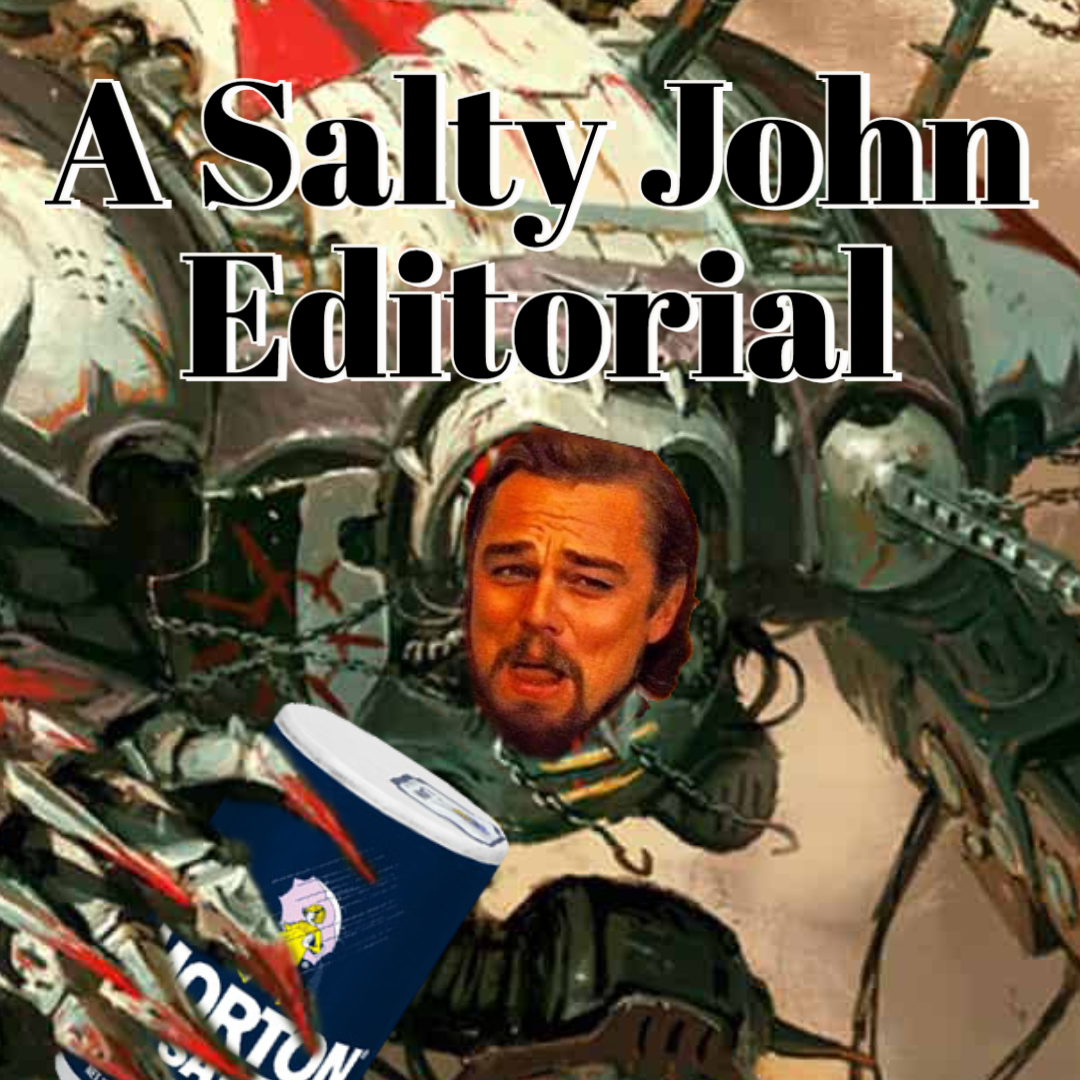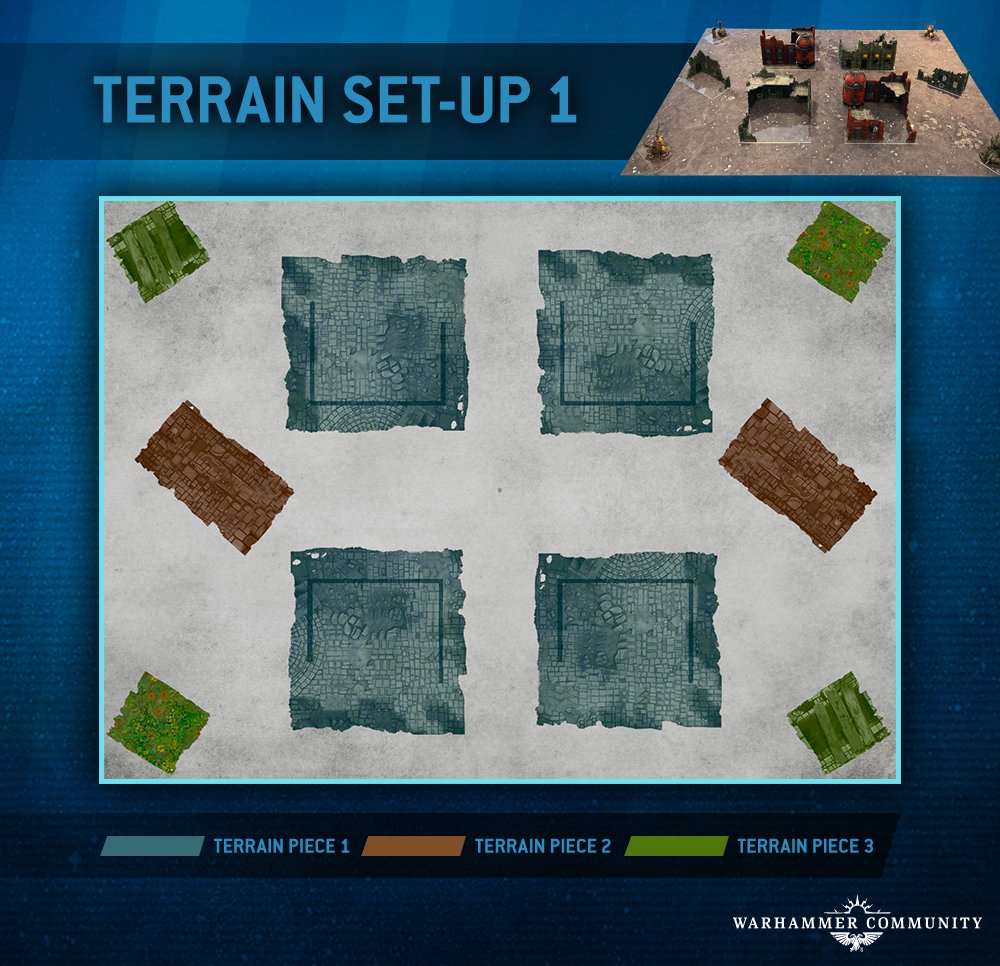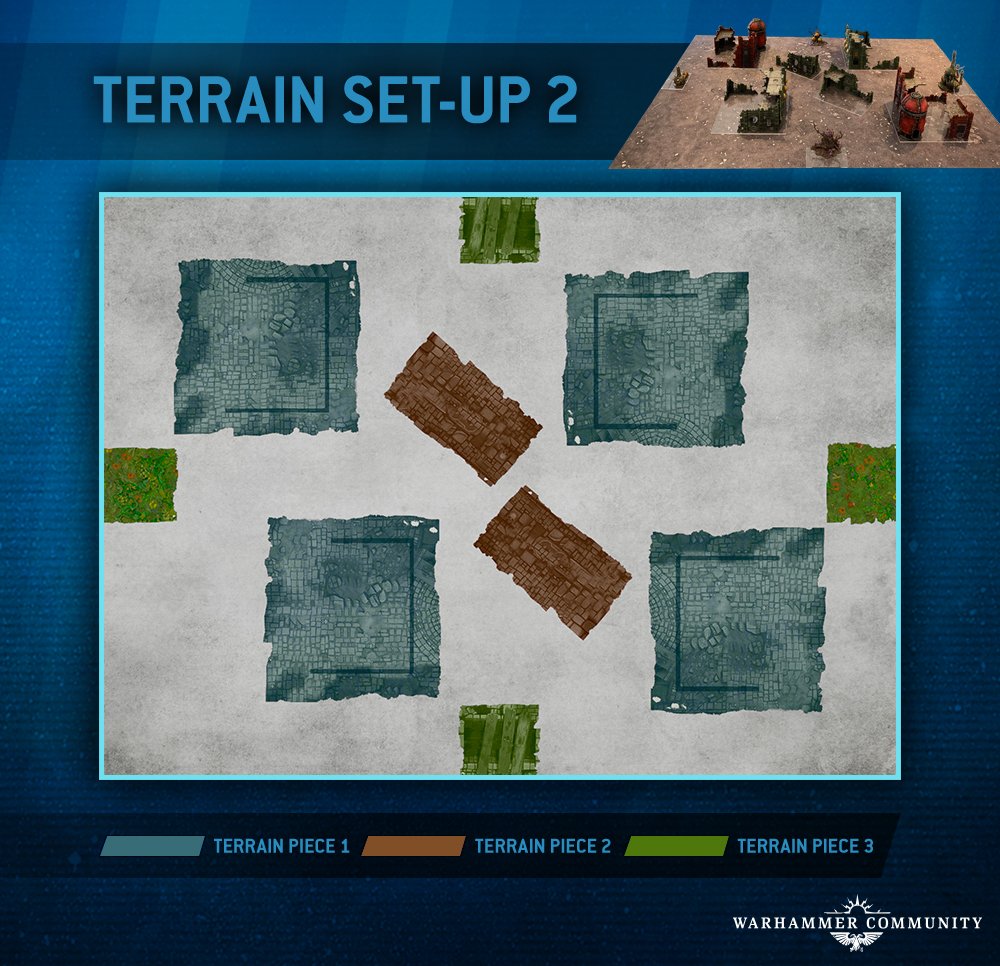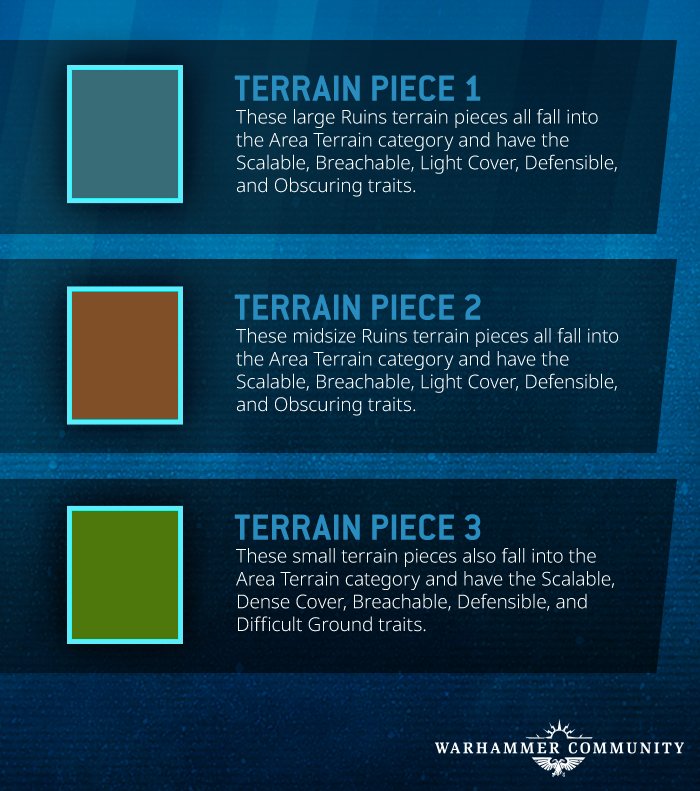Hello Warhammer 40k Competitive players, lurkers, detractors, and non-playing online-only participants! SaltyJohn here from TFG Radio to discuss the comings and goings in the ITC.
A lot has been happening in the world of Competitive 40k and some of the most interesting are centered around the terrain. We’ve seen recently two new approaches to the terrain at Warhammer 40k tournaments released and begin to gain traction. The first was player-placed terrain, using specific guidelines for doing so, combined with specific terrain keywords and the more liberal use of the more commonly eschewed rules. The second is preset terrain maps with universal terrain types and styles on every table, with the windows and doors covered up. The former being the new FLG Event standard and the latter being the Games Workshop tournament terrain paradigm.
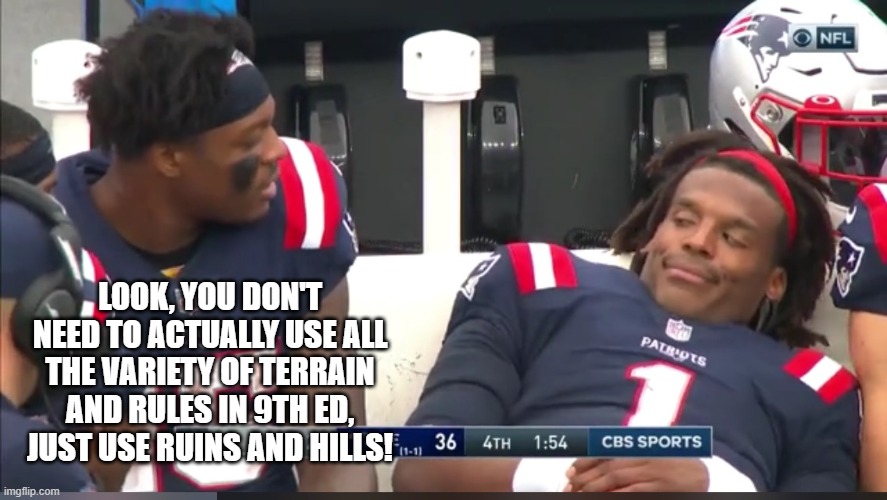
Several RTTs/GTs have recently used the two systems and the overall response from the people who actually play games using them, with proper terrain, is generally positive. With most things where online commentary is a big part of the equation, you have to weed out the loud noise to get to the truth of the matter when it comes to Competitive 40k. Often the loudest negative voices belong to people who haven’t tried something, indeed many times they’re people who when you dig into it don’t even play at events anymore. They may not even play this edition! With that in mind, it’s best to stick to two things. Listening to those who have the direct experience and getting that experience yourself.
After the Orlando Open, I went back to our local Tuesday night 40k at Gameology Pasadena and we sat down and tried out the GW Terrain set-ups. The consensus was they work really well. I was skeptical going into Judging the Orlando Open for Games Workshop, but during set-up for the event and walking through the terrain with the judging staff and the initial rounds it became obvious quickly that the GW set-ups for terrain for their Opens are not only workable, but it also makes the game a lot better. That’s just the thing, many complaints around 9th edition, overpowered Codices aside, is that the game is too centered on who gets to go first, or who can hide their army best. One of the fastest ways to make 9th edition games more balanced, without an FAQ for certain armies, is to make sure the terrain used at your event (or for your personal games) is sufficient. Sufficient in multiple ways.
One way to make sure the terrain is sufficient is to be sure the bottom floor doors and windows, at least the bottom, on large pieces of the terrain is closed up. This goes a long way to making the game more balanced in terms of the go-first win, go-second loss, issue some players face. Also making sure your terrain is sufficiently large to block off large sections of deployment zones and provide good cover is also a must. This is most easily done by either having large 10×10 or 12×12 ruins that obscure the whole size, or bases for ruins of the same dimensions and play that the entire base is obscuring. If you play using the GW layouts with some clear bases like GW did, or you do MDF bases, etc you’re good. Also, if you have enough of the Frontline Gaming terrain kits then you’re already most of the way there for having what you need. Will it require some work on your part to update the terrain, or to put out guidelines about how it should be played? Yes, but it will improve the player experience.
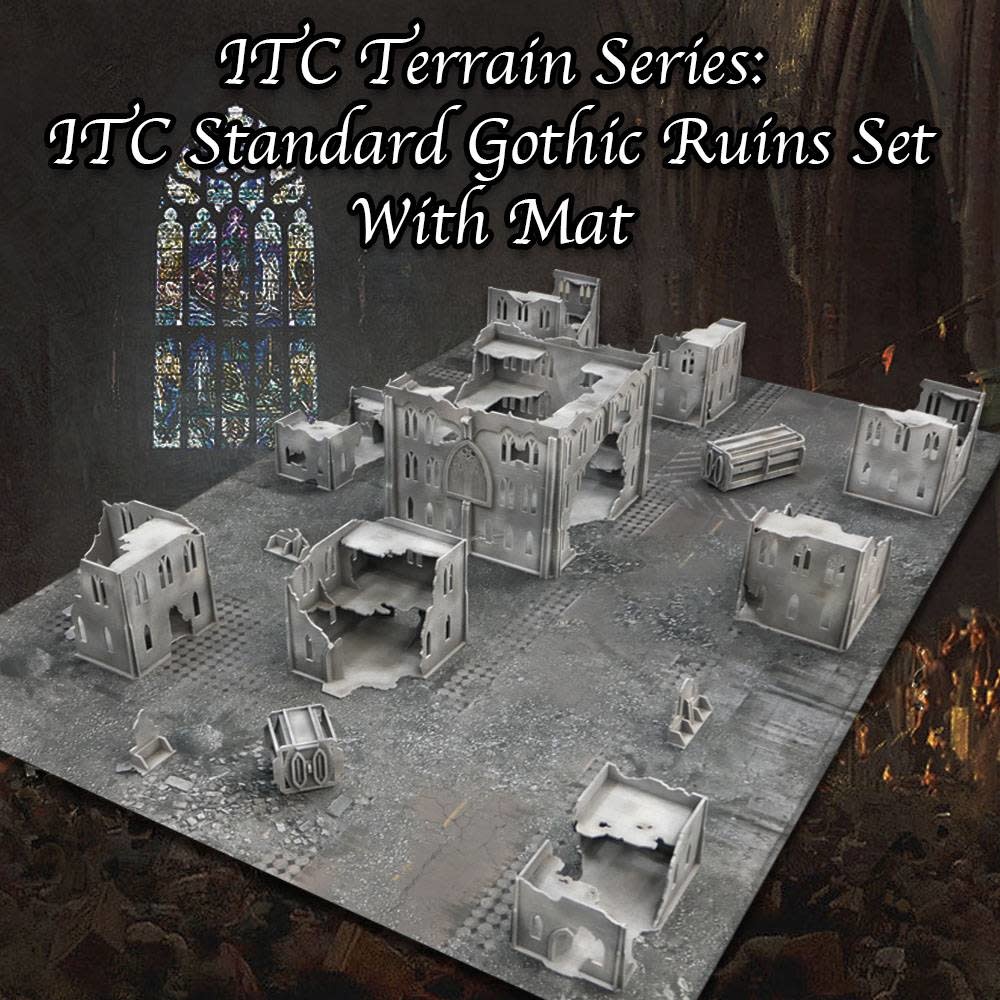
Another way to go about balancing out the terrain issue is to use player-placed terrain with the kind of guidelines Frontline Gaming is using at their events. Allowing players to place half the terrain, split as evenly as possible, in their own half of the board with rules about how close terrain can be, allows a player to have even more of their fate in their own hands. Which, in a game like 40k is never a bad thing.
To go along with player-placed terrain, or the pre-set terrain like GW, terrain also needs to have specific keywords attached, with terrain variety. A lot of people are playing 40k on boards that are all hills (crates) and ruins, so it’s a lot of obscuring and light cover only. There needs to be a variety, forests and craters come to mind, not to mention assigning terrain features keywords like Dense Terrain and Heavy Cover in combination with increasing the number of pieces that get Obscuring. This creates a more diverse table overall and a more interesting game. Allowing players to come to the table and agree on whatever terrain keywords they want is, in 9th edition, not a tenable system from the standpoint of variety, fairness, or balance.
Combining the above in a way that’s manageable for your events, house, local games store is what’s important. Most TOs and store owners probably can’t afford to go out and buy enough terrain and clear acrylic to fully mimic the GW terrain, plus I am not sure that’s necessary. Many TOs and store owners can probably change their current terrain around, and afford to add enough, to get a decent variety of terrain and then employ a system of proper keywords and player-placed terrain. Maybe even pre-set terrain maps of their own. Not everyone needs to do the same thing, but one of the ways to make this edition a better experience for everyone involved is to do a little work on making the Terrain work. Frontline Gaming and GW have shown it’s possible and improvements can constantly be made based off feedback from actual participants at the various events who have used the systems. Nothing is perfect, but a good system is still better than a bad system even if it lacks perfection.
And remember, Frontline Gaming sells gaming products at a discount, every day in their webcart!



